Released in December 2019, the Honor V30 Pro is the latest flagship from Huawei’s budget-oriented sub-brand Honor. Key features include a 6.57-inch IPS LCD display, the high-end HiSilicon Kirin 990 processor, and 8GB of RAM.
The main camera offers a triple sensor and lens setup, including a standard wide-angle 27mm-equivalent primary camera, a second 16mm-equivalent ultra-wide-angle shooter, and an 80mm-equivalent telephoto for 3x optical zoom shots. The main camera features a 1/1.7-inch 40MP quad-bayer sensor, resulting in a final 10MP resolution output. The ultra-wide and telephoto cameras utilize standard array sensors, with 10MP final output from the 1/4-inch telephoto sensor and 12MP output for the ultra-wide. All three cameras boast PDAF with laser assisted autofocus. Both the main and telephoto cameras are equipped with an optical image stabilized (OIS) lens.
For smartphone video enthusiasts, the Honor V30 Pro will shoot 4K resolution at 30 frames per second and all video modes also benefit from a gyroscope-based electronic image stabilization (EIS) system. Find out how the Honor V30 Pro compares for image quality against the top-ranked devices in our database in our latest smartphone review.
Key camera specifications:
- Triple-camera setup
- Primary: 40MP 1/1.7-inch sensor and 27mm f/1.6-aperture lens with OIS
- Ultra-wide: 12MP sensor with 1.4µm pixels and 16mm f/2.2-aperture lens
- Telephoto: 8MP 1/4-inch sensor and 80mm f/2.4-aperture lens with OIS
- PDAF and laser autofocus (all cameras)
- LED flash
- 4K 2160p/30fps video with gyro-EIS
Please note: The camera firmware used for the DXOMARK tests is not yet currently available to consumers. Honor will make it available as an update in the near future.
About DXOMARK Camera tests: For scoring and analysis in our smartphone camera reviews, DXOMARK engineers capture and evaluate over 1600 test images and more than 2 hours of video both in controlled lab environments and in natural indoor and outdoor scenes, using the camera’s default settings. This article is designed to highlight the most important results of our testing. For more information about the DXOMARK Camera test protocol, click here. More details on how we score smartphone cameras are available here.
Test summary


Achieving an overall DXOMARK Camera score of 122, the Honor V30 Pro becomes the second highest-scoring device in our database of smartphone image quality. Sandwiched in between the Huawei Mate 30 Pro 5G at 123, and the Xiaomi Mi CC9 Pro Premium Edition at 121, the top three spots are currently all occupied by Chinese devices.
In the Photo category, the Honor V30 Pro sits in second place at 133, just behind the Huawei Mate 30 Pro 5G with 134. The main difference between the devices is the occasional autofocus failure on the Honor V30 Pro, but otherwise results across the different Photo sub-categories are close and both devices offer exceptional image quality across the board. The Xiaomi Mi CC9 Pro Premium Edition is again third for still photos, but remains the king of zoom performance, thanks to its multiple focal length optics and image pipeline processing.
Night shooting, bokeh simulation, detail preservation, and exposure are all key strengths for still photos on the Honor V30 Pro. In near-dark conditions, Night mode ensures bright exposures and nice details. Flash portraits at night are also very good, with accurate exposure on the subject and more details in the background compared to the key competition.
For video, the Honor V30 Pro drops down to joint seventh in the rankings overall, but its Video score of 100 is only 2 points off the top-ranked Huawei Mate 30 Pro at 102. With similar hardware and software integration for the Honor and Huawei devices, video results are very close, but autofocus instabilities and lens tilt issues occasionally affect the consistency of the Honor V30 Pro’s sharpness across the frame. The texture-versus-noise trade-off is good and detail is high in most videos, but more denoising artifacts are visible on the V30 Pro compared to the top performers. Basics such as exposure and color are also very good in video mode in most lighting conditions, and the Honor V30 Pro’s gyro-EIS stabilization system is effective in correcting most unwanted motion in handheld videos.
Let’s take a look in more detail at the strengths and weaknesses of the Honor V30 Pro, with image sample comparisons against its key competition at the top of our database.
In our exposure analysis, the Honor V30 Pro is a top performer along with the Huawei Mate 30 Pro 5G and the Samsung Galaxy Note 10+ 5G. The Honor device is excellent outdoors, but also delivers accurate target exposures in lower light conditions, even down to near pitch-black conditions of just 1 lux. Contrast is also good in all lighting conditions; and in tricky high-contrast scenes outdoors, dynamic range is fairly wide, with details preserved in both highlight and shadow regions. In comparison to the other top performers for exposure, there’s really very little to distinguish among them.
In our indoor backlit portrait scene, the Honor V30 Pro is able to provide nice exposure on the subject while maintaining most of the bright highlight detail outside. Some clipping was evident in very challenging backlit scenes, with overall exposure pretty much on the same level as the Huawei Mate 30 Pro. Both are noticeably better than the Xiaomi Mi CC9 Pro Premium Edition, which displays more highlight clipping in comparison.
Overall color rendering is pleasant on the Honor V30 Pro, with vivid and well-saturated color in all lighting conditions. White balance on the whole is fairly neutral, although a slight blueish cast is evident in the shadows of outdoor images, which is particularly noticeable in high dynamic range shots. Skin tones are generally accurate, however, and color shading is very well controlled in almost all images, with only a minor shift in tones evident in extreme low-light shots.
In our backlit colored balconies scene, the Honor V30 Pro delivers a richer sky compared to the Huawei Mate 30 Pro 5G example, but the white balance is more neutral in the Huawei shot, particularly in the shadows. The Samsung Galaxy Note 10+ 5G offers excellent color saturation in the sky, but its white balance is a little cold.
The texture-versus-noise trade-off is the key strength for the Honor V30 Pro, as it’s able to maintain high levels of detail in almost all images while ensuring a very low level of noise. In static scenes, we recorded excellent acutance of over 80% between 5 lux (low light) to 1000 lux (bright light) in our lab measurements. Even in extreme low light (1 lux), acutance drops only slightly below 80%, which is exceptional.
In scenes containing some subject motion, the lab results are a little lower— 70% acutance in bright light, dropping to 40% acutance in low light, but that is still very good, so you can expect excellent detail in virtually all images from the Honor V30 Pro. Very fine texture rendering and edge definition is fractionally better on the Xiaomi Mi CC9 Pro Premium Edition, thanks in part to its higher-resolution sensor, but the Honor V30 Pro comes very close and has lower noise.
All three of our current top-ranked devices maintain a high level of detail in all lighting conditions, but the Xiaomi Mi CC9 Pro Premium Edition is slightly better overall. The improved noise reduction from the Honor V30 Pro is more apparent in one of our lab analysis scenes at 100 lux, however, where not only are flat areas of color noticeably smoother on the V30 Pro compared to the Xiaomi Mi CC9 Pro Premium Edition, but the V30 Pro also has fractionally better edge definition compared to the Huawei Mate Pro 5G.
Autofocus is an area of improvement for Honor in future flagship devices. Although it’s far from terrible on the V30 Pro, the occasional failure both in our benchmark lab testing and while shooting out on location affected its overall score. The device’s large sensor and wide f/1.6-aperture lens also means that depth of field is quite narrow, leading to a loss of sharpness on objects at different distances from the camera, and slightly inconsistent results.
The ultra-wide camera’s focal length is listed as 16mm in the official specifications but according to our measurements, it’s closer to 17mm. This isn’t as encompassing as what we’ve seen on some other devices, but it does allow you to fit more into the frame, at least horizontally. It’s worth noting, however, that the V30 Pro outputs its ultra-wide-angle images in a 16:9 panoramic format, and while this doesn’t affect the horizontal field of view, it crops off the top and bottom of the image.
Geometric distortion is also much more prevalent in the Honor V30 Pro’s ultra-wide-angle shots, which affects straight lines towards the edges of the frame; this said, the ultra-wide lens is a touch wider than Huawei’s device, and anamorphosis (distortion and stretching) of faces is pretty well controlled. Exposures are accurate in both outdoor and indoor lighting conditions using the wide camera, too, with fairly good dynamic range and pleasant color rendering. Although detail isn’t quite as high as in the Huawei Mate 30 Pro 5G’s wide-angle shots, it is slightly better than the Xiaomi Mi CC9 Pro Premium Edition, and also with less noise.
Boasting the same tele-camera hardware as the Huawei Mate 30 Pro 5G, zoom results from the Honor V30 Pro are very similar, although a refined image pipeline has slightly improved detail at some distances. At both close- and medium-range (~2x and ~4x magnification), detail is very good on the Honor V30 Pro in all lighting conditions and the level of noise is low. At long range (~8x magnification), detail holds up reasonably well in bright lighting conditions, but expect a noticeable loss of detail in lower light conditions, as well as some ringing artifacts, when you really push the zoom.
The Honor V30 Pro’s improved image processing ensures fractionally better texture and edge presentation compared to the Huawei Mate 30 Pro 5G, but as things stand, the Xiaomi Mi CC9 Pro Premium Edition has a clear advantage, with noticeably better detail at all focal lengths, thus ensuring it remains the top performer for zoom.
The Honor V30 Pro is a top performer for bokeh simulation in Portrait mode, thanks to good results both indoors and outdoors, accurate and repeatable depth estimation, a fairly natural blur gradient effect, and excellent face detail. In many examples, background spotlights have a pleasant shape with good contrast, but a minor quibble is that the spotlight effect isn’t always activated.
Slight white balance variations across consecutive shots are evident, too, with occasional pinkish or orange hues visible; but generally speaking, white balance is neutral, particularly under artificial lighting indoors. Contrast is usually quite high in bokeh shots, and detail as well as noise in portraits is excellent. You can see that the Honor V30 Pro has better edges compared to the Huawei Mate 30 Pro 5G, and has lower noise compared to the Xiaomi Mi CC9 Pro Premium Edition.
The V30 Pro’s night photography capabilities are another key strength. Shooting natural scenes in near-dark conditions—lit only by distant street and building lights—images show good exposure, with good levels of detail and low noise. Night mode shots can further improve dynamic range, color, and detail in dark areas. Night mode, flash-auto, and flash-off shots from our two top-ranked devices are exceptional overall, but the Honor V30 Pro just takes it.
In the flash-off scene below, both the Honor and Huawei offer better dynamic range than the Xiaomi, with better highlight and shadow detail. The Honor is also capable of retaining some detail while keeping noise well under control.
In auto-flash mode, the flash triggers accurately and consistently when a portrait is detected. Target exposures are very good, with no overexposure of the subject. Dynamic range is also excellent here, with a brighter exposure of the ambient light in the background compared to the Huawei Mate 30 Pro 5G and the Xiaomi Mi CC9 Premium Edition, without any significant highlight clipping in bright light sources. The slightly longer exposure time to achieve this means that a slight ghosting on moving subjects is evident in some examples, but you may feel it’s a price worth paying for the improved overall exposure.
We deduct points for obvious artifacts or image quality flaws visible in images. The main penalties we applied to the Honor V30 Pro are for aliasing, maze and moiré artifacts along high-contrast edges, and strong flare in heavily backlit images. We also noted inconsistent sharpness across the frame, some ghosting artifacts, and low localized texture in some images, but these were less frequent or problematic.
The Honor V30 Pro offers video quality very comparable to that of the Huawei Mate 30 Pro 5G overall, achieving similar results in most categories, with the exception of autofocus.
One of the key strengths for video is exposure, which is accurate in all lighting conditions. You can see from our lab analysis comparison graph that while all three of our top-ranked devices deliver good target exposures between 40 and 50 L* in low-light (5 lux) and in bright-light (1000 lux) conditions, the Honor and Huawei devices are better in extreme low light (1 lux) compared to the Xiaomi Mi CC9 Pro Premium Edition.
Color rendering is nice in videos shot indoors and outdoors, and the level of detail captured is very good. It’s almost identical to the Huawei Mate 30 Pro 5G, but the Honor V30 Pro delivers slightly higher levels of texture acutance in indoor (100 lux) and outdoor (1000 lux) video compared to the Xiaomi when tested in the lab. The Honor and Huawei devices also display a notable improvement in lower light conditions of 5 lux, with over 80% acutance measured compared to 60% for the Xiaomi.
The texture-versus-noise trade-off is again quite good in videos captured in outdoor and indoor conditions, with levels of spatial noise on par with the Huawei Mate 30 Pro 5G, but lower than the Xiaomi Mi CC9 Pro Premium Edition. That said, strong denoising artifacts are visible in low-light videos, which can disturb the playback experience; and temporal blinking noise is also evident in most videos.
Some autofocus instabilities, with unnecessary refocusing errors in most conditions, are the main drawback for video capture on the Honor V30 Pro. A lens-tilt issue also presents some optical challenges, and an occasional localized loss of sharpness is problematic during video playback. Otherwise, video stabilization is reasonably effective in reducing wobbles, jello, and judder in handheld videos with both panning and walking actions.
Conclusion
Jumping almost to the very top of our rankings, the Honor V30 Pro is going to catch the eye of smartphone photography enthusiasts, as it delivers comparable or better image quality than some of the more expensive flagship competition, with excellent zoom, bokeh, night, and flash shots. Some very minor autofocus instabilities prevented it from securing the top spot in our ranking, however; and if ultra-wide-angle shots are a key consideration, make sure the 16:9 ratio output suits your needs.
Excellent detail and low noise are standout characteristics on all three of the Honor V30 Pro’s rear cameras, nearly matching the class-leading high resolution output of the Xiaomi Mi CC9 Pro Premium Edition, but with noticeably less noise. If you’re in the market for a new phone and want knockout image quality, you won’t go far wrong with the Honor V30 Pro.
Photo
Pros
- High detail with low noise
- Accurate exposures with wide dynamic range
- Good zoom performance up to medium range
- Effective bokeh shots with accurate depth estimation
- Nice night exposures with pleasant texture & noise rendering
Cons
- Frequent autofocus failures
- Blue color casts in shadow areas
- Autofocus and stabilization issues occasionally impact sharpness
- Geometric distortion in ultra-wide shots
Video
Pros
- Accurate target exposures
- Nice color rendering outdoors and indoors
- Good texture-versus-noise trade -ff
- Effective stabilization
Cons
- Strong denoising artifacts in low light
- Temporal noise artifacts in most conditions
- Lens tilt occasionally noticeable
- Slight autofocus instabilities in most conditions




















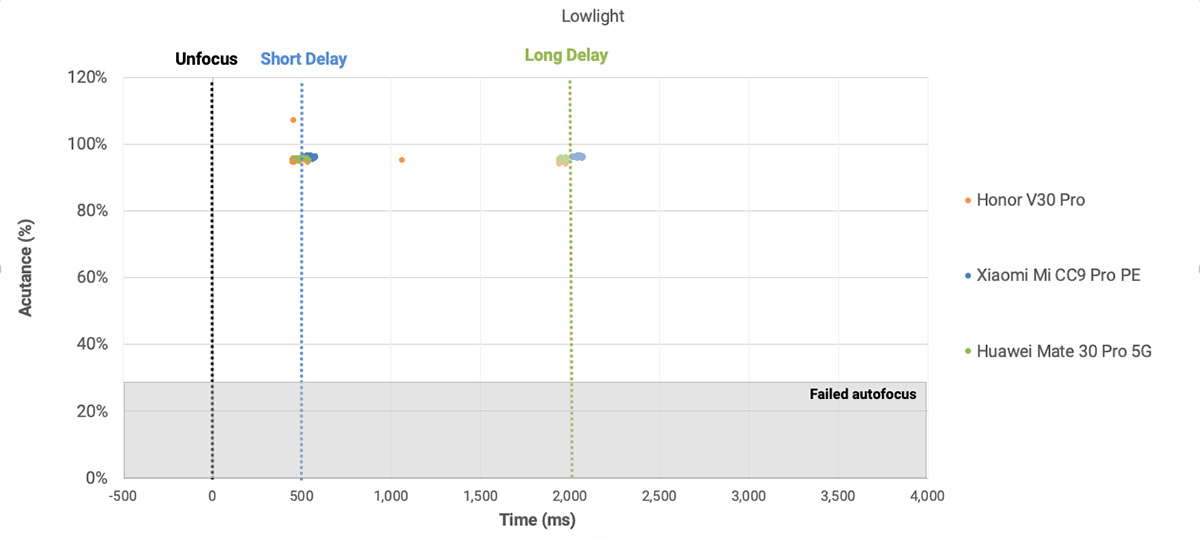
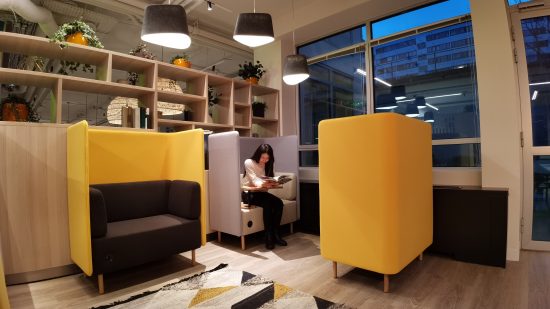









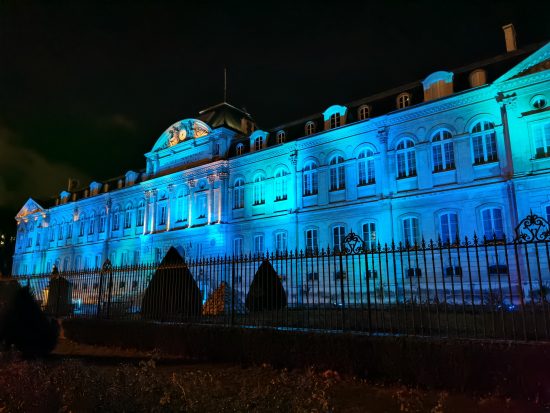







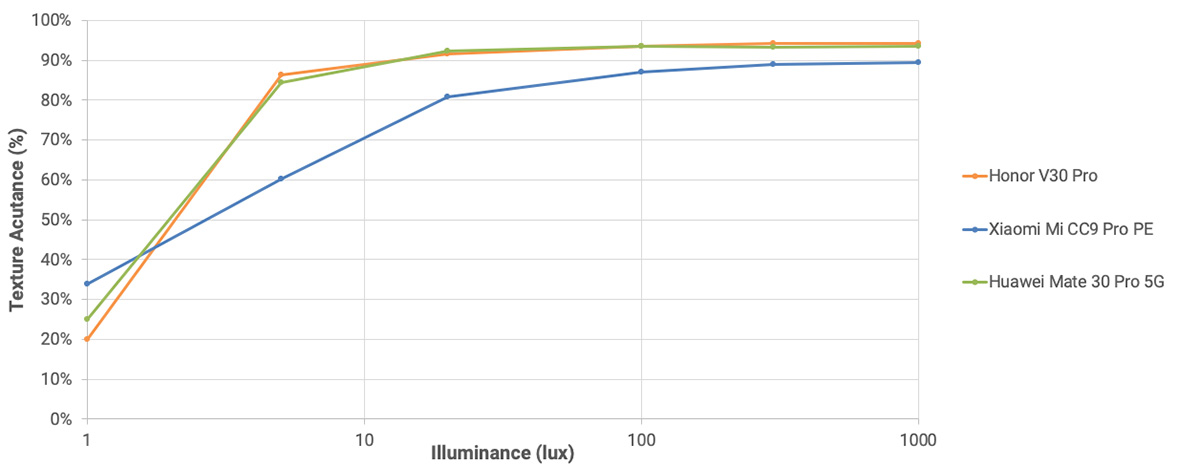
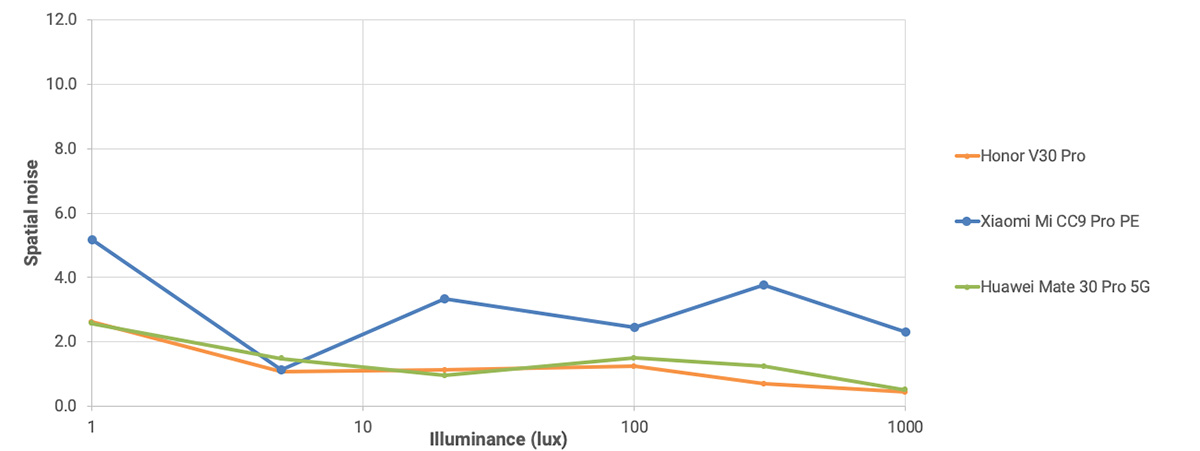


DXOMARK encourages its readers to share comments on the articles. To read or post comments, Disqus cookies are required. Change your Cookies Preferences and read more about our Comment Policy.